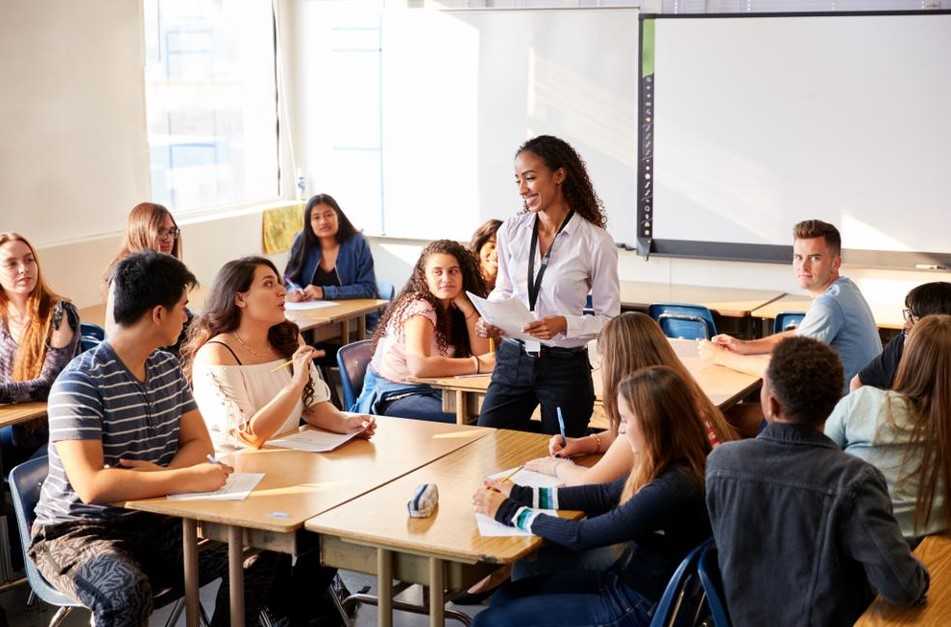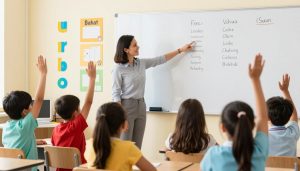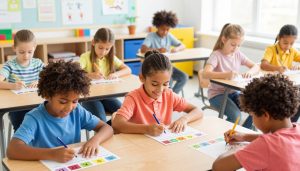While teaching during the pandemic presented incredible and unprecedented challenges for educators across the globe, those challenges did not simply disappear once schools returned to a somewhat “normal” state of in-person learning in a physical classroom.
Teachers are now managing classrooms filled with students who fell behind academically during remote learning. Students suffered from anxiety and declining mental health once separated from their peers and many bear the scars of grief after losing friends and family members to Covid-19.
Of course, these same challenges faced by students (disruption, anxiety, and grief, to name a few) were also ongoing challenges for their teachers. Educators, administrators, and school staff returned to their workplaces wearied by the circumstances they faced during the pandemic; in some cases, they did not return at all, opting to move into different career fields instead.
But the news is not all bad, and it is not all doom and gloom when it comes to education. There are ways in which dedicated educators have harnessed the valuable lessons learned during the pandemic and used them to bring about much-needed changes in their schools or districts. With that in mind, we are all asking ourselves as educators: how do we reboot education after the pandemic?
Best Practices for Teachers in Post Pandemic Education
While student needs vary widely in the post-pandemic world of education, there are some universal practices teachers can adopt as they try to reboot their classrooms and school communities. Post-pandemic education’s most essential and overarching theme is a willingness to embrace change.
What worked before Covid-19 might not be relevant or useful anymore. Time spent away from the classroom may have also given teachers a chance to reflect on areas they would like to change, whether that means overhauling instructional styles, rethinking seating arrangements, revising reward systems, or adopting new assessment methods.

Teachers may be somewhat limited in the final category, as their districts or states often dictate assessment procedures. However, there is always room for improvement in any classroom, and small changes can significantly impact any area, from assessments to student engagement.
Leveraging Increased Technical Skills
The Covid-19 pandemic forced teachers and students to adapt to an increased reliance on technology. Whether students spent their days logging in to a virtual classroom or teachers learned how to navigate new apps and ways to communicate online, everyone in education found themselves utilizing technical skills more than ever before.
The upshot is that teachers gained a better understanding of what works (and what doesn’t) regarding their students and technology. They learned about ways to harness technology to keep students engaged—ways that can still be incorporated into the physical classroom long after logging out of the final virtual class.
There are many benefits to in-person instruction and traditional teaching formats, and teachers can supplement that instruction quite effectively with various educational tech tools. Those online teaching tools with gaming elements are especially useful when it comes to engaging students.
Making Mindfulness a Priority
Teacher burnout during the Covid-19 pandemic skyrocketed to new highs. Upon returning to the classroom, many teachers felt overwhelmed, exhausted, and depleted of the energy needed to reboot their classrooms and inspire their students to be active participants in learning.
This is why mindfulness is more important than ever, with teachers leaning on healthy habits to improve their mental health while guiding students facing the same issues.

Mindfulness in the classroom takes on many different forms. For some teachers, mindfulness might mean taking a few moments at the start of each day to check in with students: “How do you feel about learning today?” “Is there something you did yesterday that you would change today?” “Is there something you are excited about learning this week?”
Mindfulness can mean a teacher shares some calming breathing techniques with their students, plays soothing music during a reading period, or pays close attention to how the layout of the room may be affecting students’ behavior.
A teacher who practices mindful behavior techniques can manage her stress and emotions more effectively while modeling this behavior for students and helping them discover techniques to stay calm, present, and focused in class.
Favoring Flexibility Over Rigid Structures
The Covid-19 pandemic is certainly not the only time teachers had to pivot quickly and change direction in history, but it is one of the most compelling examples. This is an ongoing reality for teachers.
Sometimes, we must change our plans to accommodate unique circumstances, whether that means a budget change in the school district, a catastrophic weather disaster, or an event of massive historical or cultural proportions. The most effective teachers take time to create compelling lesson plans but also know that even the best plans can change in certain circumstances.

Post-pandemic teaching means staying agile and flexible, knowing that change often lurks around the corner and we need to be ready for it.
The three general best practices outlined here can be tailored and applied in specific ways to all kinds of classrooms, from those of preschoolers up to a high school history class.
Whether you are teaching math, art, or entrepreneurship, your students have been forever shaped by the experiences of the Covid-19 pandemic. This will impact student learning in any subject, relate to their peers, and manage their work.
Teachers who remain aware of these issues and utilize these best practices can successfully reboot education in the post-pandemic world and guide students toward success.




